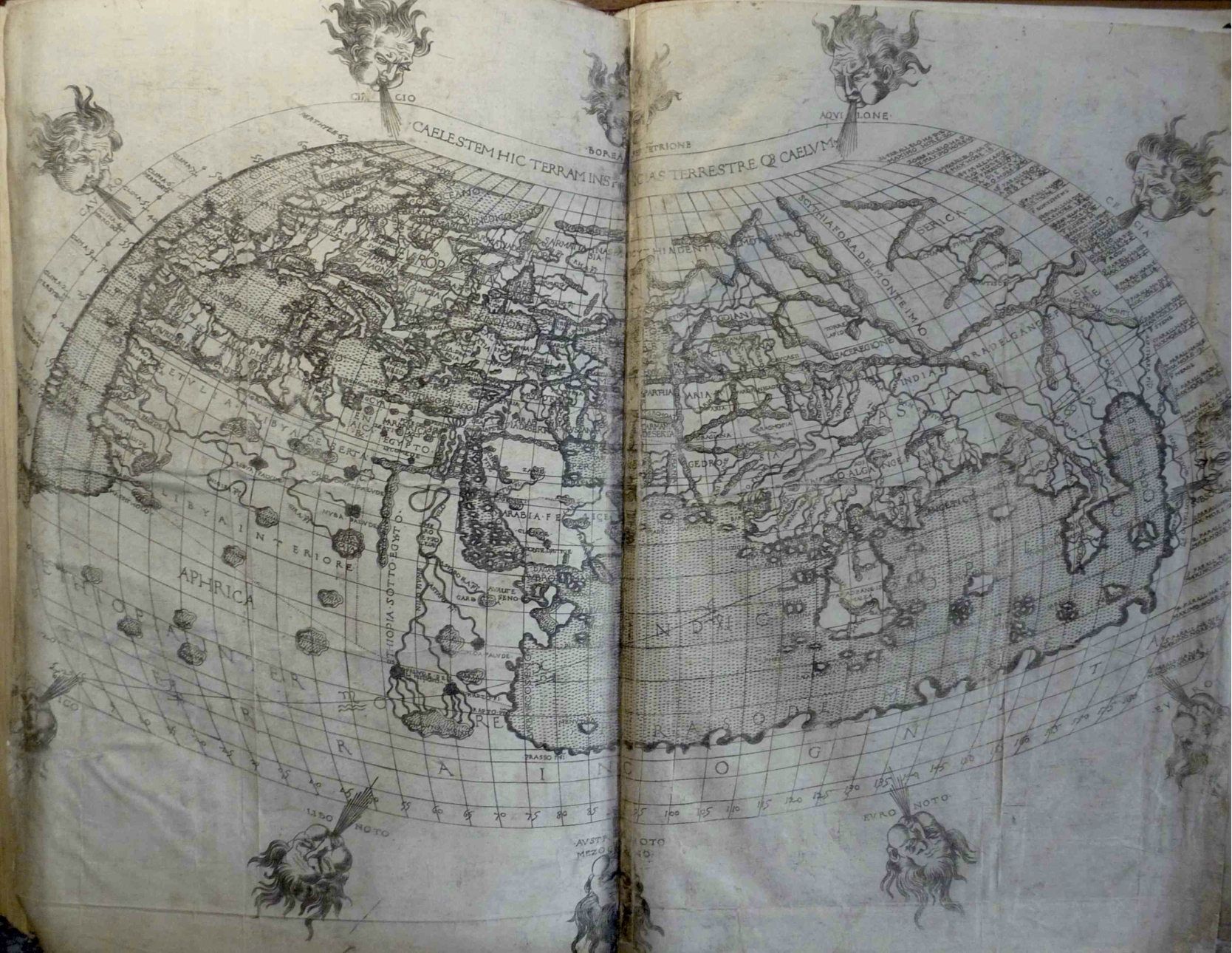By Sean Roberts, Villa I Tatti
On this day in 1440 the Florentine humanist Francesco Berlinghieri was born. Like generations of Berlinghieri men, he enjoyed modest success in his native city’s political establishment. Francesco is remembered today, however, primarily for the poetic undertaking that occupied more than two decades of his life, the Septe giornate della geographia or Seven Days of Geography. Deeply impressed by Florence’s literary heritage and the fashionable revival of classical texts, Francesco fused the language of Dante with the ancient mathematical geography of Claudius Ptolemy. Berlinghieri’s description of the known world in Tuscan verse was produced both in lavish manuscripts and in a printed edition of 1482. The massive maps that accompanied both printed and illuminated examples of the book represented the most significant cartographic project and the most elaborate series of prints produced in fifteenth-century Florence. Berlinghieri’s image of the earth set the tone for generations of Florentine cosmographers and shaped the visual culture of Renaissance geography on the Italian peninsula and beyond.
Incipit of Book One (detail), paint on vellum, from Francesco Berlinghieri, Septe giornate della geographia (Florence, 1482), Milan, Biblioteca Nazionale Braidense.
World Map, copperplate engraving, from Berlinghieri, Septe giornate della geographia (Florence, 1482), Milan, Biblioteca Nazionale Braidense
World Map, paint on vellum, from Berlinghieri, Septe giornate della geographia (Florence, 1482), Milan, Biblioteca Nazionale Braidense.
EndFragment


